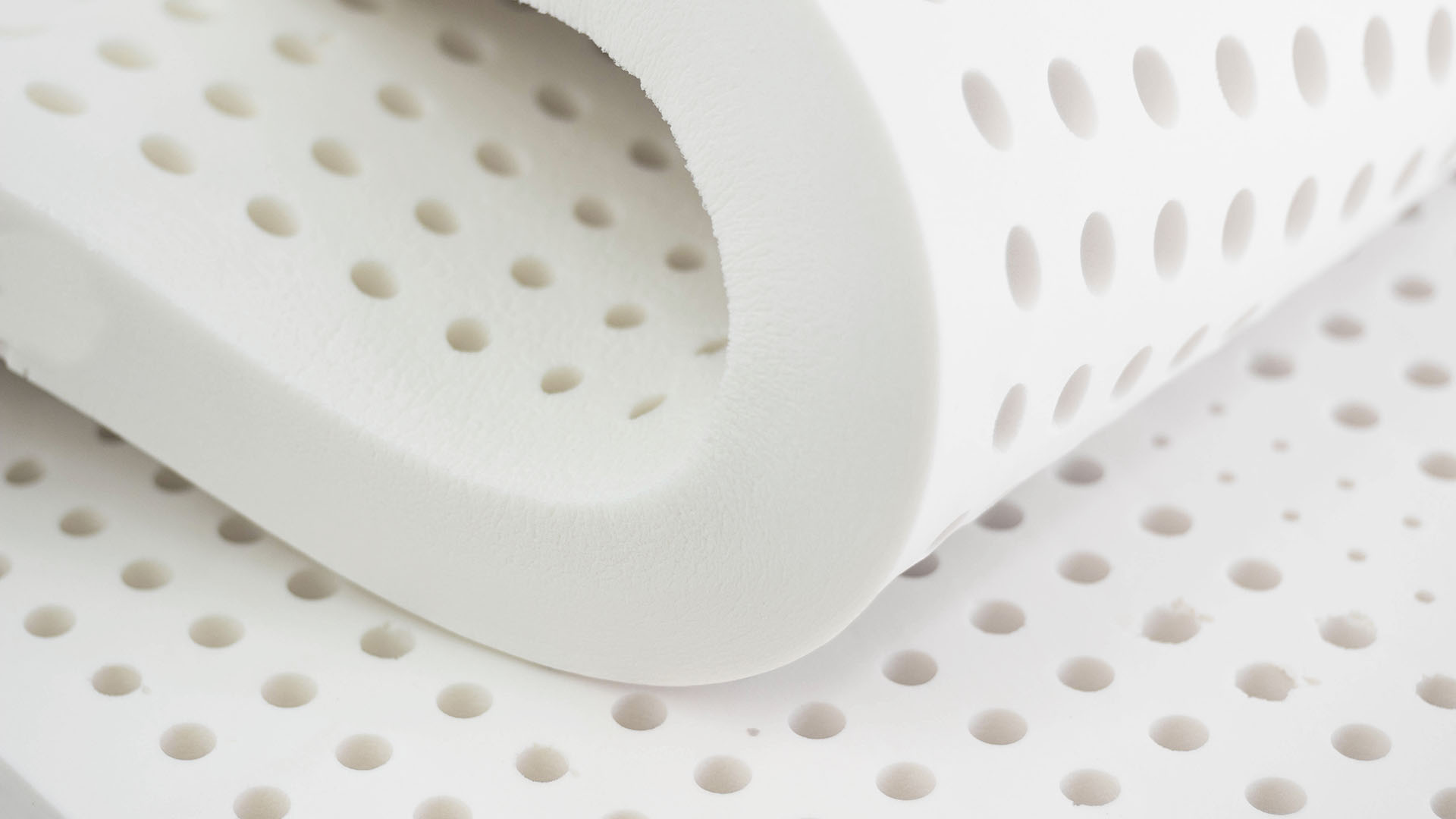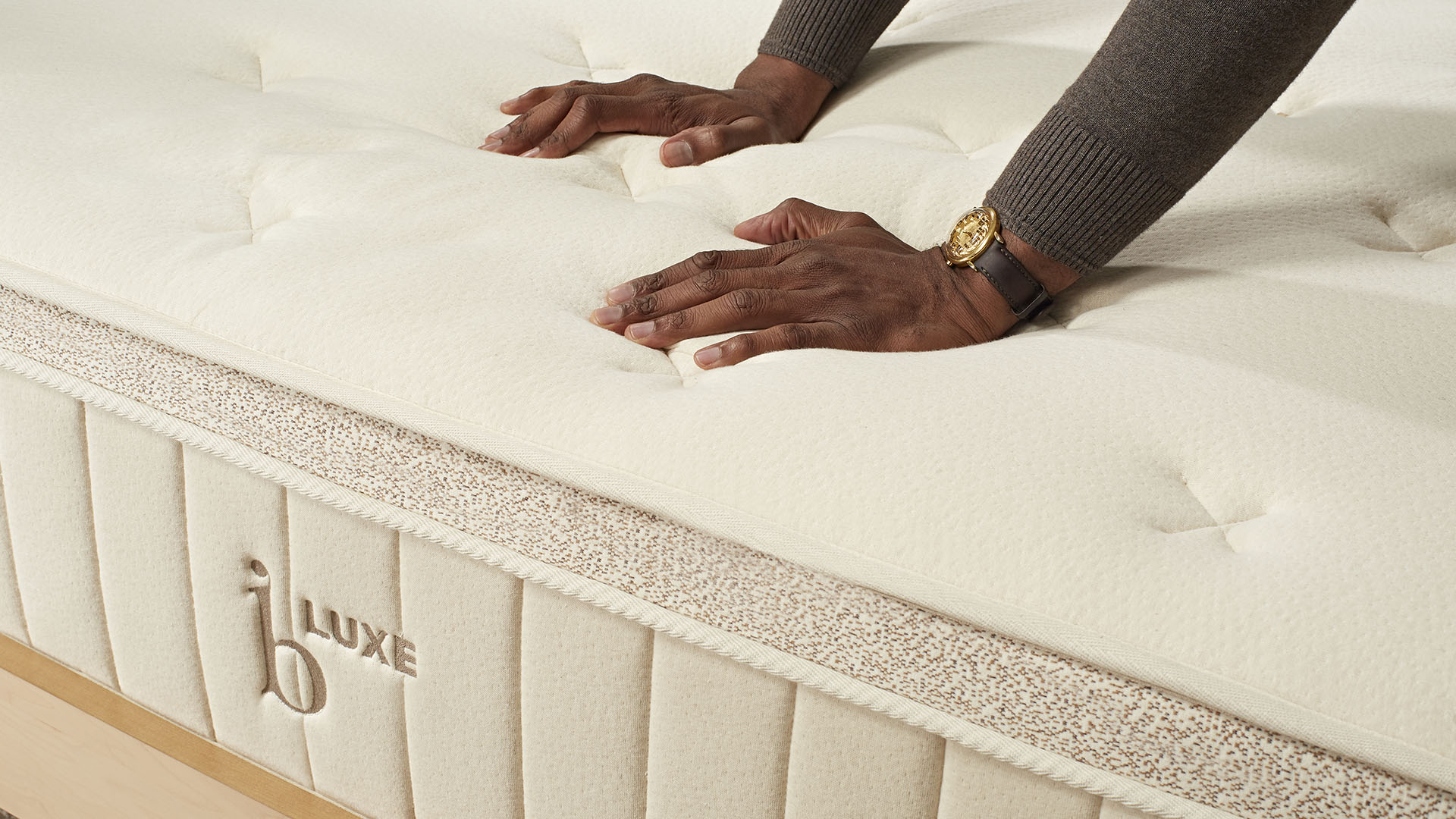Dunlop vs Talalay latex for mattresses: what's the difference, and which is better?
Dunlop and Talalay latex are both commonly found in 'natural' mattresses, but each offers something slightly different

Dunlop vs Talalay latex comparison article, we'll explore the differences between the two main types of latex found in mattresses. The terms refer to the manufacturing method used to create the latex foam. Neither is 'better' than the other, but the two have slightly different characteristics, which make them suited to slightly different uses.
Latex is still one of the more niche mattress materials – it only appears in a handful of our best mattress picks – but where latex really shines is as a natural substitute for memory foam. Latex shares some of the same characteristics as memory foam, in that it will mold to your body shape to provide custom support (we explore the differences further in our memory foam vs latex mattress comparison). All the models in our best organic mattress guide include a layer of either Dunlop or Talalay latex. (Note: not all latex is entirely natural or organic, as we'll explain later).
You'll find more general information in our article on 'What is a latex mattress?'. Now, let's take a look at how Dunlop and Talalay latex compare as a mattress material.
Talalay vs Dunlop latex: what's the difference?
Here's a quick run-down of the typical properties of each type of latex. We'll expand on these points in more detail below.
| Header Cell - Column 0 | Talalay latex | Dunlop latex |
|---|---|---|
| Sleep feel: | Softer, bouncier, less dense | Firmer, more dense |
| Consistency: | Even consistency | 'Bottom-heavy' consistency |
| Durability: | Slightly less durable | More durable |
| Price: | More expensive | Cheaper |
| Best for: | Comfort layers | Support layers |
Sleep feel
Both Dunlop and Talalay latex are made from the same raw material – the sap of rubber trees – but manufactured in different ways. The result is two different feels of latex. Talalay latex is softer and less dense, with a spongy consistency that makes it perfect for cushioning layers.
Dunlop latex is denser and firmer, making it a good choice for support layers (although you will also find it in some mattress' comfort layers).
Sign up to get the BEST of Tom's Guide direct to your inbox.
Get instant access to breaking news, the hottest reviews, great deals and helpful tips.
Consistency
Both types start by whipping liquid latex into a foam, which is placed into a mold. With Dunlop latex, this is simply baked to cause it to set. That means Dunlop latex can be uneven in composition – denser at the bottom and more open at the top.
With Talalay latex, the mold is only partially filled, then the whole thing is vacuum-sealed to force the unset foam to expand to fill the space, before being rapidly frozen, and then baked. This process creates a more evenly composed final foam.

Durability
Because of its more open structure, Talalay is considered the less durable of the two types of latex. However, overall, latex is generally one of the most durable mattress materials, so whichever type is used in your mattress, you should be able to rely on it performing well for a good long time.
Price
Talalay latex is the more complex type to make, which means it often commands a higher price tag than a mattress that uses Dunlop latex. However, the rest of the mattress will have an impact on overall cost. In general, latex mattresses are pricier than all but the very best memory foam mattresses.
Is latex natural?
Not necessarily. While 'latex' in its purest form is natural (made from the sap of rubber trees), the term 'latex' can refer to a blend of latex and polyurethane foam. It's even possible to get entirely synthetic latexes. If this is important to you, look for qualifiers such as 'all-natural' or 'GOLS certified', which means no chemicals have been added, with the exception of a tiny bit of vulcanization agent needed to ensure the latex continues to conform to your body shape over time. The terms
Is Dunlop latex natural?
Not necessarily. The term simply refers to the manufacturing method, rather than what the latex is made of. You can get all-natural versions of Dunlop latex, as well as some blended and synthetic versions. If this is important to you, look for Dunlop latex that is described as 'all-natural' or 'GOLS certified organic', which means no chemicals have been added, with the exception of a tiny bit of vulcanization agent needed to ensure the latex continues to conform to your body shape over time.
Is Talalay latex natural?
Again, not necessarily. 'Talalay' simply describes the manufacturing method, and you'll find blended versions of Talalay latex as well as natural ones. At time of writing, because of the way it's made, this type of latex cannot be GOTS certified. You will find 'all-natural' Talalay latex though.
What does GOLS certified mean?
GOLS stands for Global Organic Latex Standard. A GOLS certification confirms the raw materials in the product (other than approved additional materials or accessories) meet specific criteria for organic origin. It requires transaction certificates at all points in the supply chain.
Dunlop latex can be GOLS-certified, but because of the extra steps used in the Talalay manufacture process (the vacuum-sealing and flash-freezing), Talalay latex cannot be certified Organic to GOLS standards.

Ruth is currently Homes Editor on Tom's Guide's sister site TechRadar, where she reviews and writes about everything from air fryers to vacuum cleaners to coffee machines, as well as the latest smart home gadgets. Prior to making the shift to Homes, Ruth was Tom's Guide's Sleep Editor. A certified Sleep Science Coach, she has tested more mattresses than her small flat can handle and will talk at length about them to anyone who shows even a passing interest.
